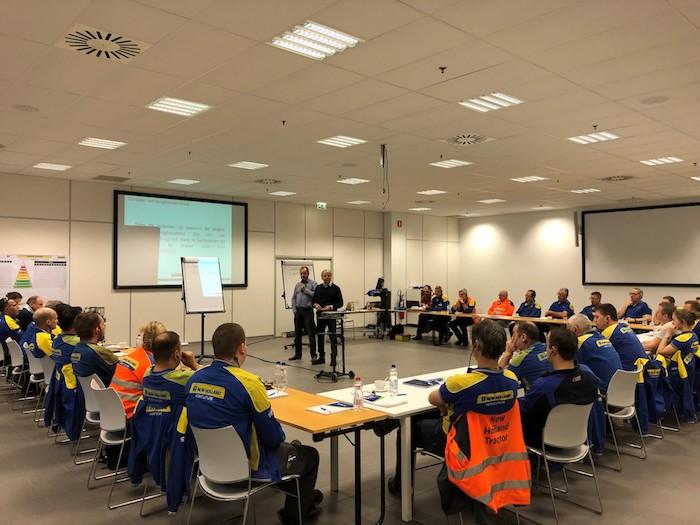A New Approach to Safety
Following a recent analysis of processes in CNH Industrial’s factories, the Company’s health & safety team has launched a two-day safety training program designed to reduce risk and accidents. CNH Industrial N.V. has 67 production facilities across the globe producing agricultural and construction equipment, commercial vehicles and powertrains together with their associated components.
The recently rolled out training focuses on teaching participants to detect unsafe acts and conditions in plants by observing their fellow workers. Careful study of the workplace by every individual in the organization is intended to correct errors and prevent accidents whenever and wherever issues arise.
Workshops involve people from across the site: the plant manager, business unit managers, supervisors, safety department members and team leaders.
The program has been carefully designed to identify any weaknesses in the current set-up, then develop solutions. On the first day of the program, Franco Modaffari, Head of Environment, Health & Safety Commercial & Specialty Vehicles and Agriculture, Europe for CNH Industrial, and his team start by asking participants about the strengths and weaknesses of their plant on safety issues. They progress to thinking about how unsafe situations can be identified
Trainers then give participants 90 minute to go and find 150 unsafe acts and condition on the shop floor. “They normally smile or laugh,” said Modaffari. “They knew we were coming, so made sure everything was running perfectly. But after our presentation, they look at their workstations with new eyes, amazed by the issues they are able to identify.”
Staff have responded positively to the program. “The seminar made us think again about lots of things we used to take for granted,” said one participant. The program was designed after a comprehensive, data-driven analysis of work processes. For Massimiliano Salvatori, Health & Safety Manager at CNH Industrial, there was one key fact that drove development: most accidents in the workplace were being caused by unsafe practices rather than working conditions. “The statistics meant we had to focus on behavior and change the whole culture,” he said.
Better communication and worker involvement are key
On the second day it is the participants’ turn to take the lead. The group move to the shop floor and start interacting with people there. “We encourage them to use open questions,” explained Salvatori, “and make workers understand their unsafe acts and their consequences.”
Workers said they found the training broadened their understanding of health and safety, helping them to take a holistic view. “Before, I only looked at my workstation, now I look at the entire work environment,” said another participant.
It is crucial that workers are empowered to suggest solutions. “Workers create what the Company needs and generate the income," said Salvatori. “They know the issues better than anyone.”
Finally, Modaffari invites the plant manager to attend the closing meeting, when workers join senior management to draw up an action plan.
Roll-out across Europe
More than 700 employees have undergone the training in groups of between 25 to 30. After rolling out the program in Europe, CNH Industrial has seen a major reduction in injuries in the past years.
Note, all images associated with this initiative were taken before COVID-19.




